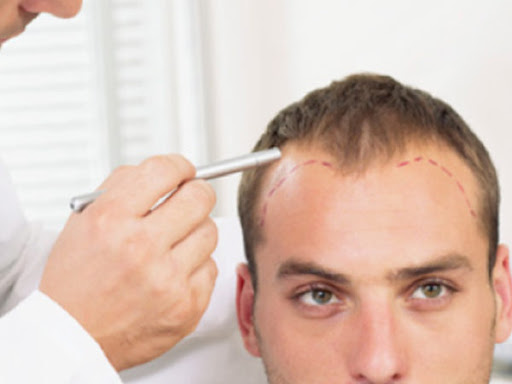Is My Hair Loss Genetic?

Hair loss can be caused by a wide variety of factors. Therefore, if you’re experiencing hair thinning or hair loss, you may be wondering: why is hair loss happening to me?
If you’ve gone through an isolated high-stress event recently or a long period of high stress levels, you may be experiencing hair loss in tufts due to an interruption in your natural hair growth cycles. If your diet is lacking protein, iron, biotin, or other essential vitamins and minerals, your low energy levels are most likely compounded by dull, brittle hair and missing strands. If you are currently in the postpartum period, you may be experiencing heavy shedding due to the slowing of your hair growth cycle after it was working in overdrive during your pregnancy.
These are some of the more common causes of hair loss, but there are many others including health conditions, hormone imbalances, and side effects of medications. However, the absolute most common cause of hair loss in both men and women is genetics.
How Do I Know if My Hair Loss is Genetic?
Hair loss is tricky. It can often be caused by more than one catalyst, and just because you have a genetic predisposition to hair loss based on your parents and grandparents doesn’t mean that your hair loss didn’t start earlier than it would have based on factors of your lifestyle.
If you’re experiencing hair loss and don’t know what caused it, you’re not alone. Millions of men and women face changes in the appearance of their hair, and luckily, there is a wide variety of treatment options available today. In order to make informed choices about which hair loss treatments to try, here are a few signs that your hair loss may be genetic:
If you’re a man, your hair loss is taking place mostly at the crown of your head and your temples. It doesn’t matter whether you’re in your 20s or your 50s, as pattern baldness can strike at any age. The primary identifier of androgenetic alopecia, the scientific term for pattern baldness, is the location.
If your hair loss is occurring around your head in general and not specifically from the crown or temples, you may be able to chock it up to stress or a poor diet. However, it’s still a good idea to check with your doctor in case your hair loss is a sign of an undiscovered health condition.
If you’re a woman, your hair loss is taking place mostly at the part in your hair. Many people falsely believe that women can’t experience genetic hair loss. Women absolutely can, but it looks slightly different than men.
Though genetic hair loss in women can cause hair to fall out all over the head, the main spot to check is the part in your hair. This is where thinning will be the most visually obvious. Also unlike men, female pattern baldness doesn’t typically set in until later in life, often after menopause.
Pattern baldness runs in your family. There’s an age-old saying that men can know the future of their hair by looking at their maternal grandfather. Though the genetic coding for pattern baldness is known to come primarily from your mother’s side, this doesn’t tell the whole story.
Your mother’s father may have never lost a hair on his head, but if your father carries the hair loss gene, your likelihood of losing hair is heightened. Genetic predisposition to hair loss is extremely common, so even if none of the males or females in your immediate family have shown the signs, there’s always a chance that you could be carrying the gene.
How to Treat Genetic Hair Loss
If you’ve determined that your hair loss is due to your genes, not to worry—there are plenty of options to help you slow the progression of hair loss and even grow healthy hair back.
Low-level light therapy, or LLLT, is a state-of-the-art treatment method administered through a cap that slows down genetic hair loss while also supporting hair growth by improving blood flow to the scalp and hair follicles.
Medicinal treatments such as minoxidil and finasteride, administered in topical gel and pill form respectively, are long-standing options when it comes to slowing the progression of pattern baldness. However, these treatments aren’t designed to improve hair growth.
Those with advanced baldness sometimes seek hair transplants, or the relocation of healthy hair follicles from elsewhere on the body to the affected areas. This minimally invasive procedure can greatly improve the appearance of hair.


Comments are closed.